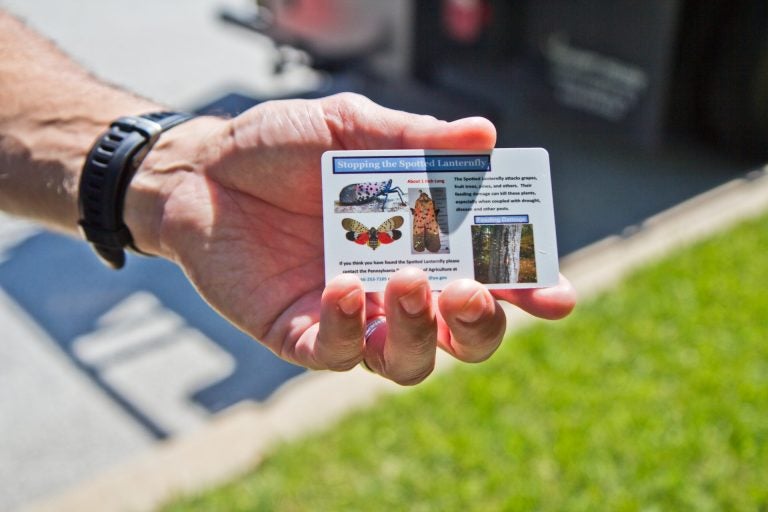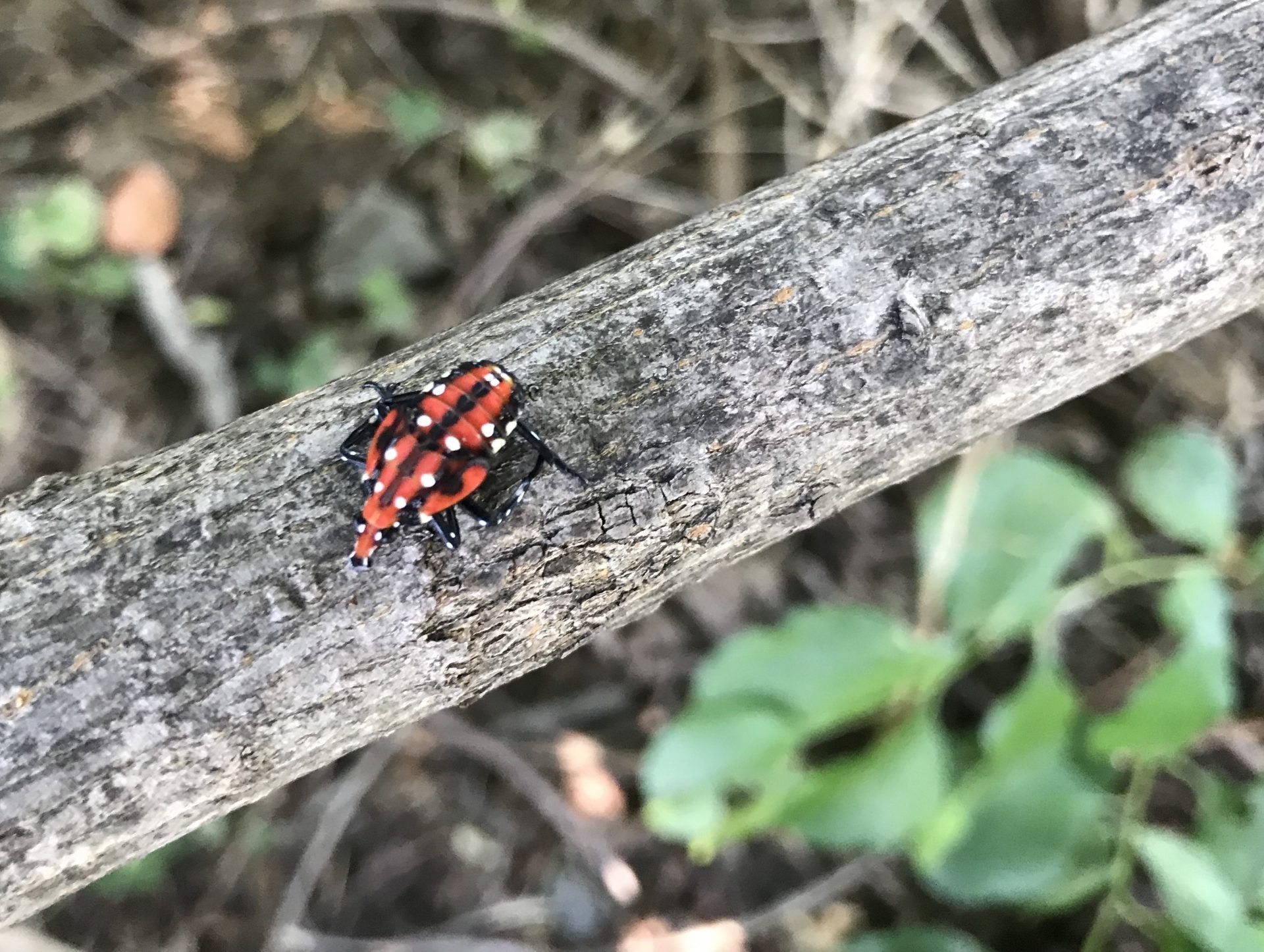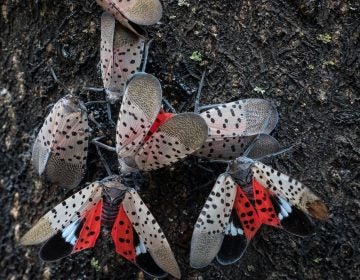New study shows economic toll of spotted lanternfly if allowed to spread across Pa.
The invasive insect is already costing Pennsylvania $50 million each year in damages, according to a first-of-its-kind study.

David Paar, owner of Arborescence in Montgomery County, hands out cards that help people spot the different stages of the spotted lanternfly. (Kimberly Paynter/WHYY)
An invasive insect is already costing Pennsylvania $50 million each year in damages, according to a first-of-its-kind study, and researchers warn the cost could balloon if the pest is not contained.
Scientists at Penn State say if the spotted lanternfly is able to escape the quarantine zone in southeast and central Pennsylvania and spread across the state, the annual economic damage could reach $324 million with a loss of 2,800 jobs. Under the worst-case scenario, the study found, losses could increase to $554 million, with a decline of nearly 5,000 jobs.
The lanternfly is native to Asia. It was first discovered in Berks County in 2014 and has since spread to 14 counties. It’s been found in Bucks, Carbon, Chester, Dauphin, Delaware, Lancaster, Lebanon, Lehigh, Monroe, Montgomery, Northampton, Philadelphia and Schuylkill counties.

Jayson Harper, director of the university’s Fruit Research and Extension Center in Biglerville, Adams County, said the fly poses a threat to grapes, tree fruits and hardwoods.
“We don’t want to see it spreading to major grape-growing areas, for example, the Finger Lakes region of New York,” he said. “We don’t want to see it out in Erie County where we’ve got a lot of grapes. We certainly don’t want to see this jumping out to major grape-growing regions, like on the west coast.”
Harper said this data can be used to inform budgets to manage the pest.
“It’s important for the legislature to understand the magnitude, the value of the crops that are under risk so we can have a vigorous response to managing the pest,” he said.
Researchers estimate implementing best management practices in the quarantine zone would cost around $28 million.
WHYY is your source for fact-based, in-depth journalism and information. As a nonprofit organization, we rely on financial support from readers like you. Please give today.



